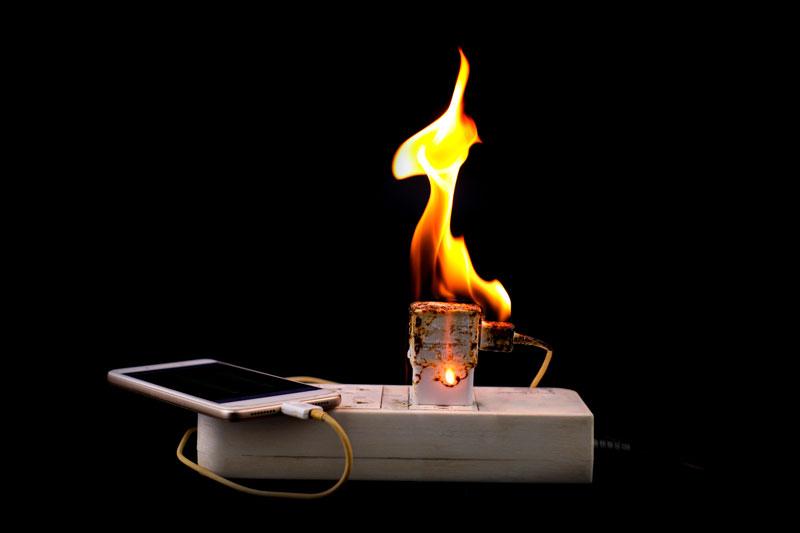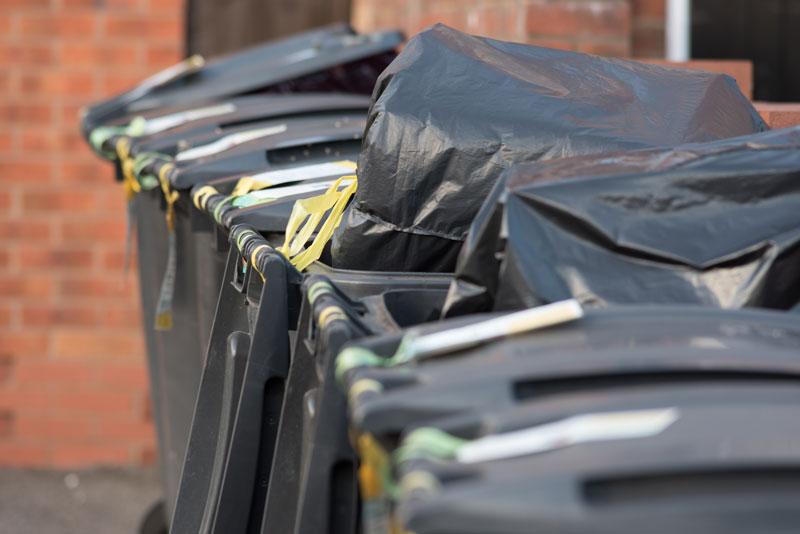How to be Lithium-ion battery fire safe
Lithium-ion batteries (also known as Li-ion batteries) are a common part of everyday life, at home and at work but they pose some major fire risks that many of us may leave ourselves open to without realising it.
Used in power tools, laptops, personal devices, scooters and bikes, Lithium-Ion battery fires are a growing problem. Many of us will remember Samsung's Lithium-Ion battery problems which resulted in its Galaxy Note 7 recall back in 2017 but even though it won’t generally mean a product recall, it’s not as uncommon for this type of battery to catch fire as you might think.
Battery fire safety can be compromised by physical impact – i.e., dropping the device or battery, overheating, internal cell failure, short circuits, or manufacturing defects. There has been a massive increase in awareness of the risks Lithium-Ion batteries pose over the last 3 years, and they are now recognised as a serious fire risk and health and safety issue by many insurance companies.
Insurance company Aviva now warns customers to take care when charging electrical items after receiving dozens of home fire claims caused by chargers and batteries in 2021. Aviva found a common cause of components over-heating, leading to fires in the home and in many cases, damage was exacerbated because customers had put items to charge and then left their homes, enabling fires to take hold.

Aviva claims involving batteries in 2021 included a fire where e-scooter batteries had been left on charge in the garage (value: £150,000) and a fire believed to be caused by an exploding e-cigarette battery (value: £140,000). Insurance firm Zurich also said it has seen claims for lithium battery blazes triple over three years, with most caused by defective batteries, incorrect chargers and items being left on charge for too long. Third-party batteries which can be bought cheaply on the internet – and don’t always meet safety standards – were also to blame.
Why are Lithium-ion batteries used in electronic devices if there is a fire risk?
Lithium-ion batteries are compact and lightweight, hold considerable energy for their size and perform well despite being regularly re-charged and discharged. This is what makes them the best option for powering smartphones, laptops, tablets, power tools, cameras, toys, electric scooters, etc.
Following these battery fire safety tips will lessen the risk of fire and also improve the life of your lithium-ion battery too.
Lithium-ion battery fire safety top tips
The London Fire Brigade attend on average 24 fires each week that have been started by chargers, batteries, and cables. The Brigade recommend the following battery fire safety advice when charging your devices:
Always use the charger that came with your phone, tablet, or e-cigarette. If you need to buy a replacement, always choose a branded, genuine product from a supplier you can trust. There are a lot of fakes on the market, and it can be difficult to spot the difference
Avoid storing, using, or charging batteries at very high or low temperatures
Protect batteries against being damaged through crushing, puncturing or immersion in water
Don’t leave items continuously on charge after the charge cycle is complete, e.g., don’t leave your phone plugged in overnight
Never cover chargers or charging devices, this includes using your laptop power lead in bed
When you travel, avoid keeping all your items containing lithium-ion batteries together, especially on a plane
Don’t overload your sockets
More top tips for battery fire safety
Avoid fast charging an aged or low-performing battery.
Stop using the battery and/or charger if the temperature of either (or both) rises more than 10ºC (18ºF) on a regular charge.
If a Lithium-ion battery overheats, hisses, or bulges, immediately move the device with the battery away from flammable materials and place it on a non-combustible surface. If at all possible, put the battery safely outdoors to burn out.
Avoid storing devices with lithium-ion batteries in places with high temperatures such as in a hot vehicle or even a warm pocket.
What is the difference between a lithium battery and a lithium-ion battery?
According to the Battery University, a Lithium battery has lithium-metal electrodes and is generally non-rechargeable. With a single cell Lithium battery, once the cell has released all of its energy, the battery has finished its life. Lithium-metal batteries are usually used to power devices such as watches, calculators, temperature data loggers, car key fobs, flashlights, and defibrillators.
A Lithium-ion battery on the other hand is rechargeable, often without the need to remove it from the device. Lithium-ion batteries power devices such as mobile telephones, laptop computers, tablets, cameras, and power tools. Li-ion is the short form version of Lithium-ion battery.
Warning signs that a lithium-ion battery pack or cell is likely to fail include the battery appearing to bulge or swell, sometimes accompanied by other signs such as discharging too fast and/or the battery being hot to the touch.
Once a battery fails or ‘runs away’ the cells usually start to give off smoke. Thermal runaway, the chemical process within the lithium-ion battery, produces heat and flammable toxic chemical gases very quickly, often before any flame appears.
Our Firechief Lithium-ion Battery Safety Range includes Lithium-ion Battery Fire Extinguishers, fire blankets, suppression kits and fire resistant containers, these products are designed to put out and keep out Lithium-ion battery fires. For more guidance on what to use on certain applications, see our product selector.
Other resources
If you would like to find out more about Lithium-ion batteries and why they are a fire risk, explore our other interesting articles below.
The information contained within this blog is provided solely for general informational and educational purposes and is not intended as a substitute for professional advice. Before taking any actions based upon this information, we advise the reader to consult any and all relevant statutory or regulatory guidance and where felt necessary to consult a qualified fire or industry regulation professional. The use or reliance on any information contained herein is solely at the reader’s risk.


